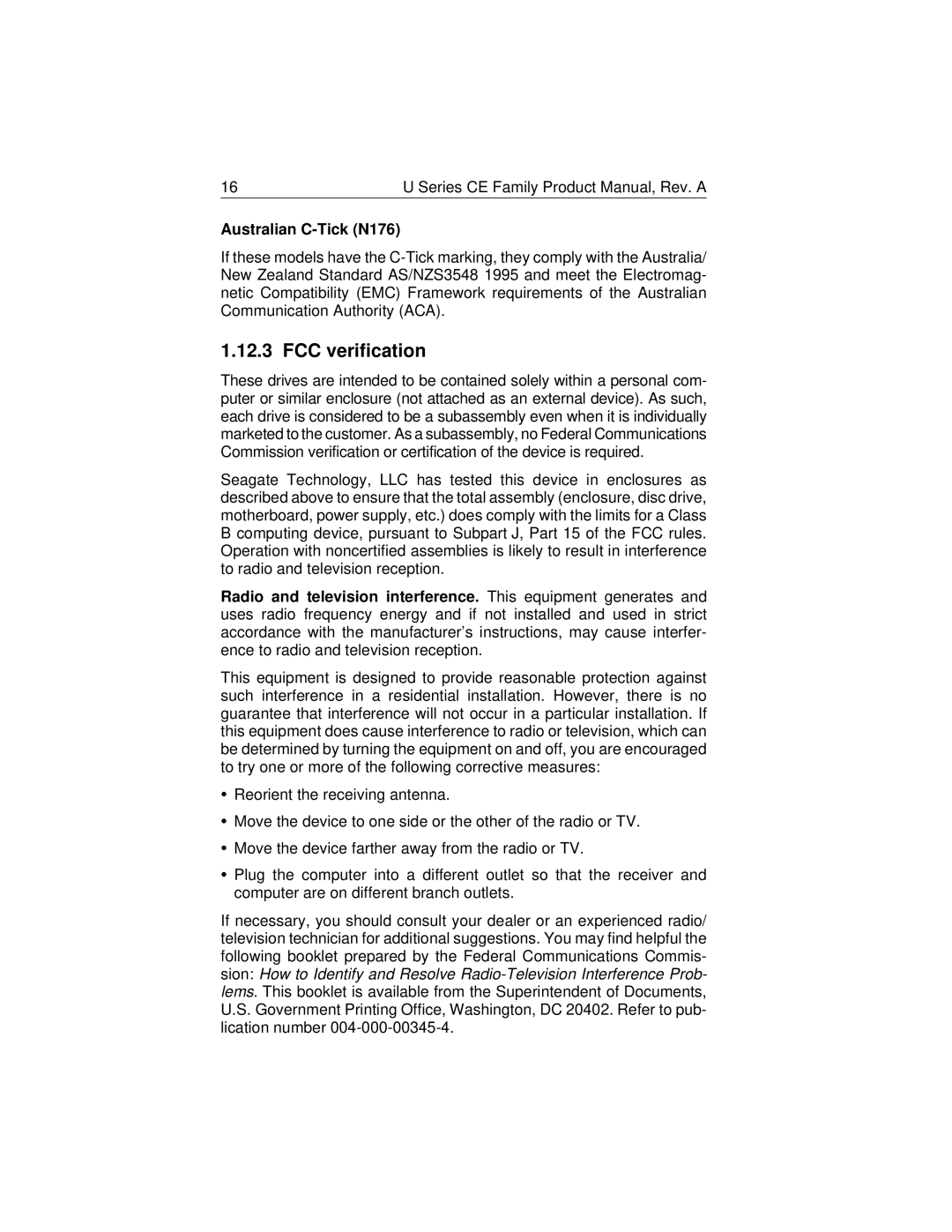16 | U Series CE Family Product Manual, Rev. A |
Australian C-Tick (N176)
If these models have the
1.12.3 FCC verification
These drives are intended to be contained solely within a personal com- puter or similar enclosure (not attached as an external device). As such, each drive is considered to be a subassembly even when it is individually marketed to the customer. As a subassembly, no Federal Communications Commission verification or certification of the device is required.
Seagate Technology, LLC has tested this device in enclosures as described above to ensure that the total assembly (enclosure, disc drive, motherboard, power supply, etc.) does comply with the limits for a Class B computing device, pursuant to Subpart J, Part 15 of the FCC rules. Operation with noncertified assemblies is likely to result in interference to radio and television reception.
Radio and television interference. This equipment generates and uses radio frequency energy and if not installed and used in strict accordance with the manufacturer’s instructions, may cause interfer- ence to radio and television reception.
This equipment is designed to provide reasonable protection against such interference in a residential installation. However, there is no guarantee that interference will not occur in a particular installation. If this equipment does cause interference to radio or television, which can be determined by turning the equipment on and off, you are encouraged to try one or more of the following corrective measures:
•Reorient the receiving antenna.
•Move the device to one side or the other of the radio or TV.
•Move the device farther away from the radio or TV.
•Plug the computer into a different outlet so that the receiver and computer are on different branch outlets.
If necessary, you should consult your dealer or an experienced radio/ television technician for additional suggestions. You may find helpful the following booklet prepared by the Federal Communications Commis- sion: How to Identify and Resolve
